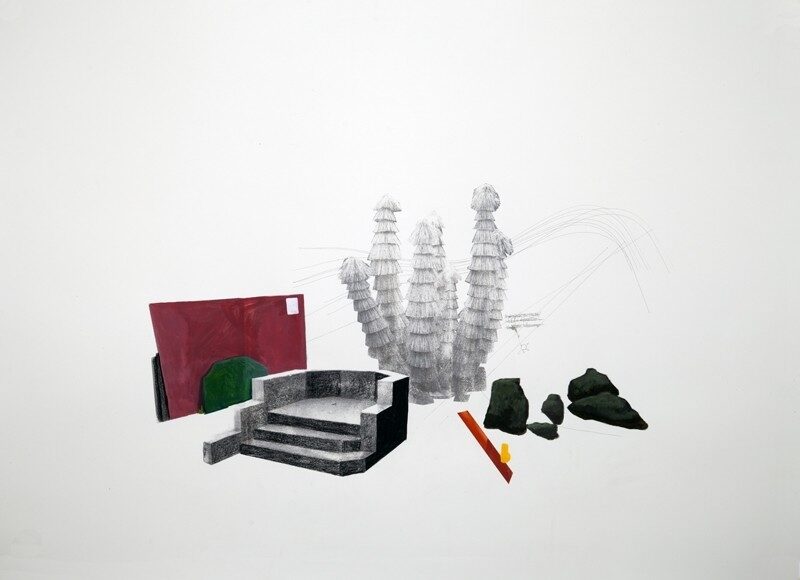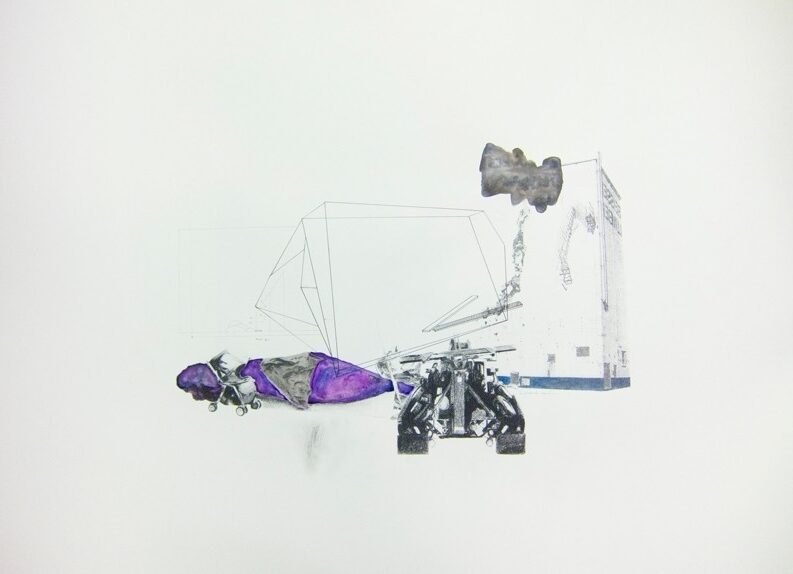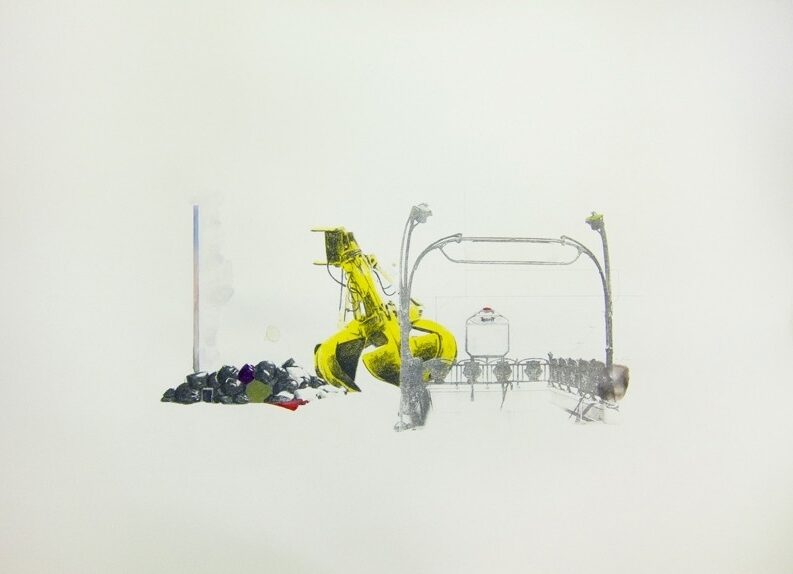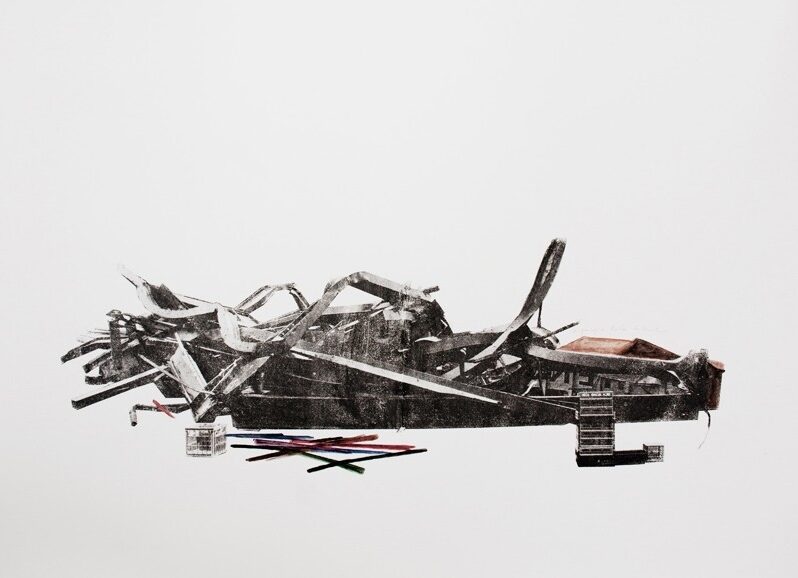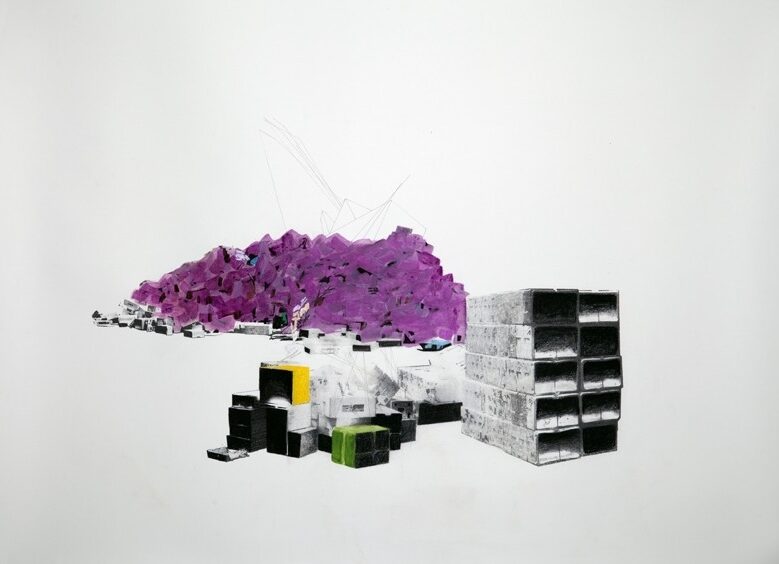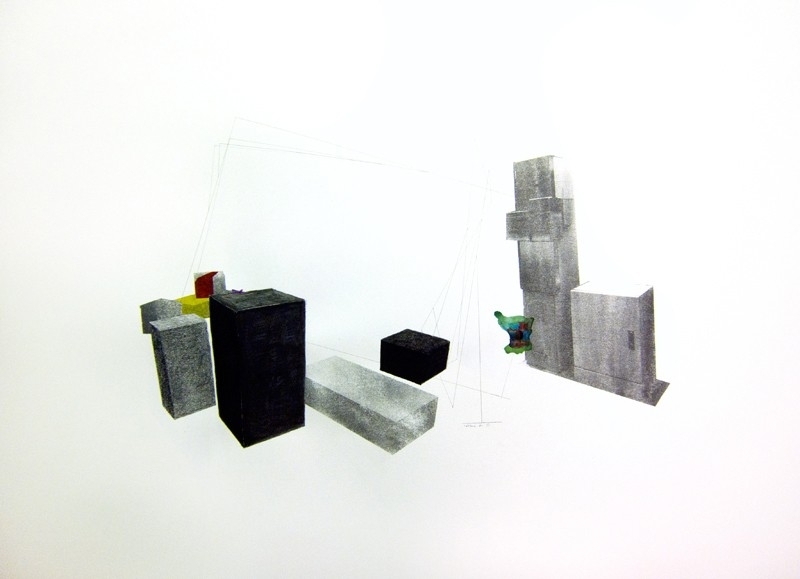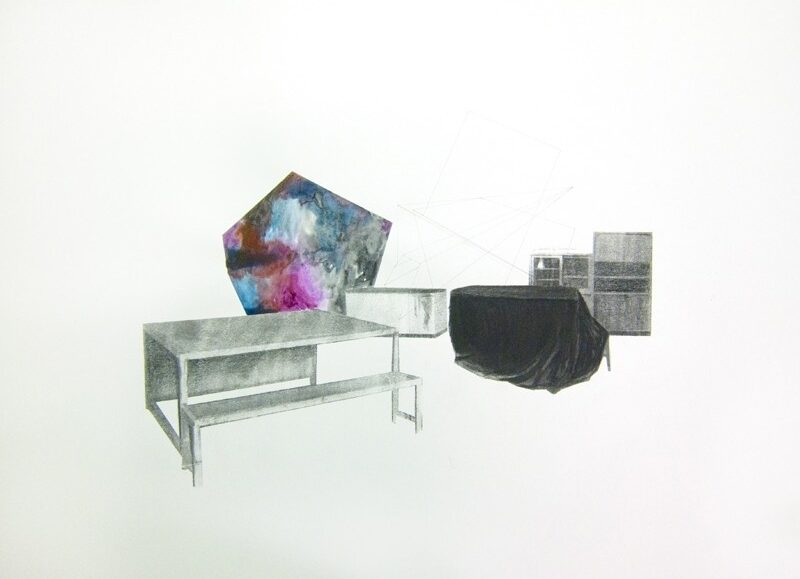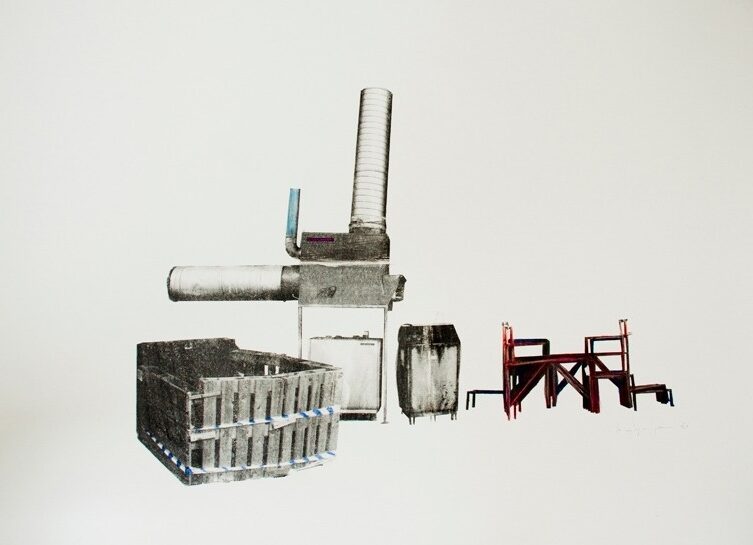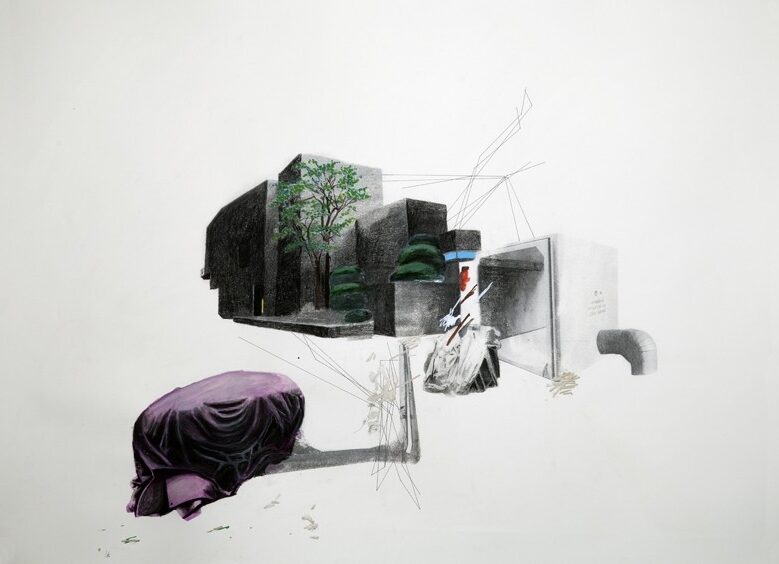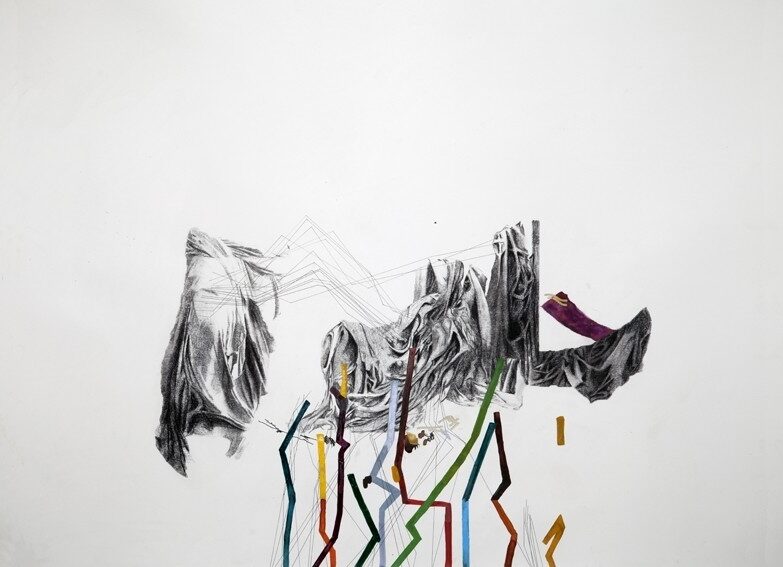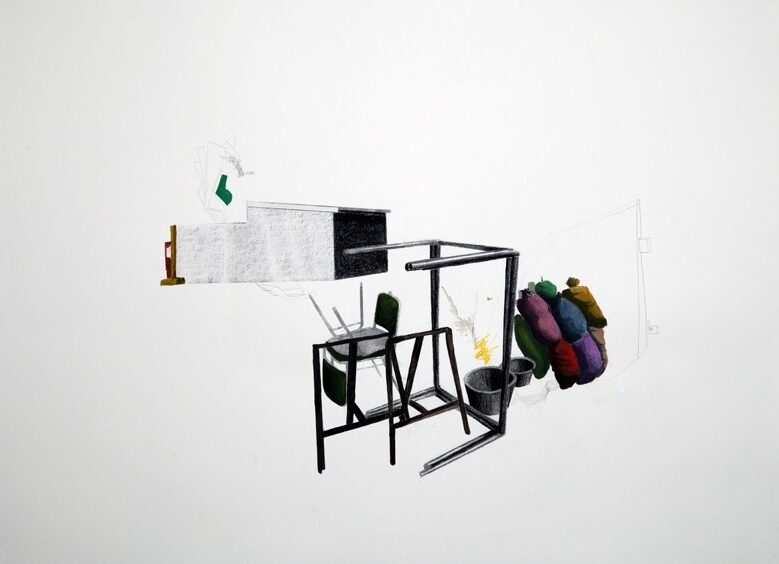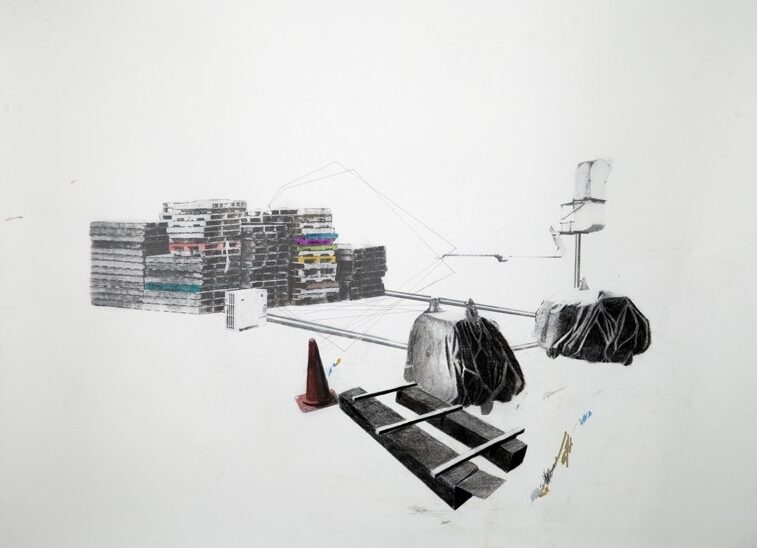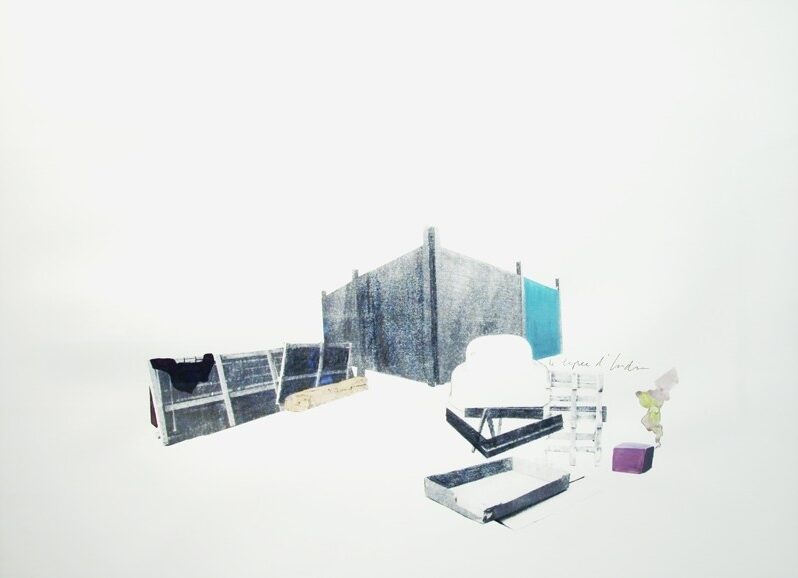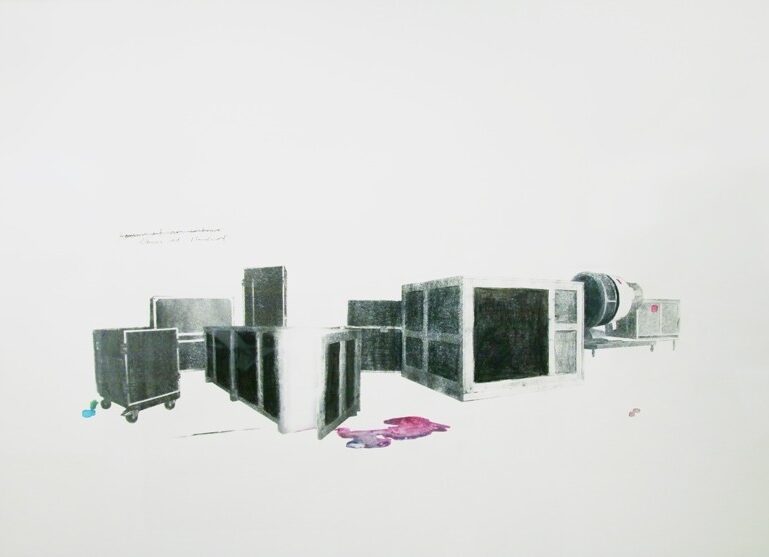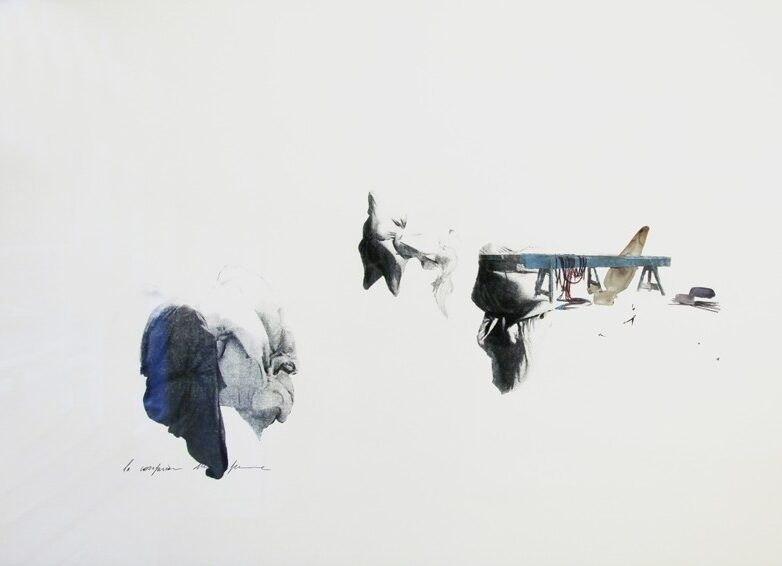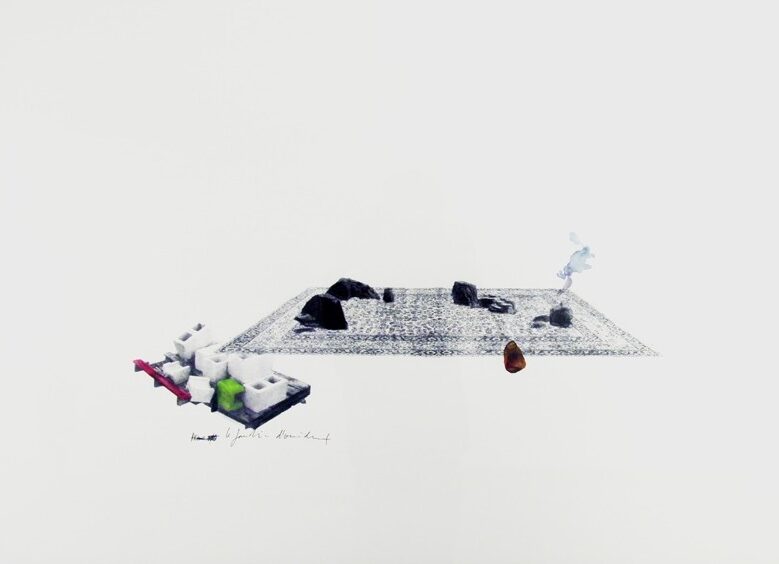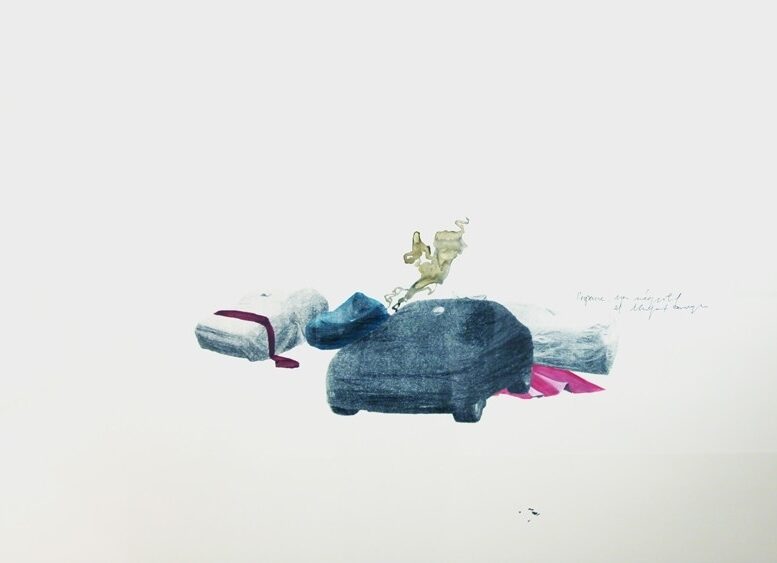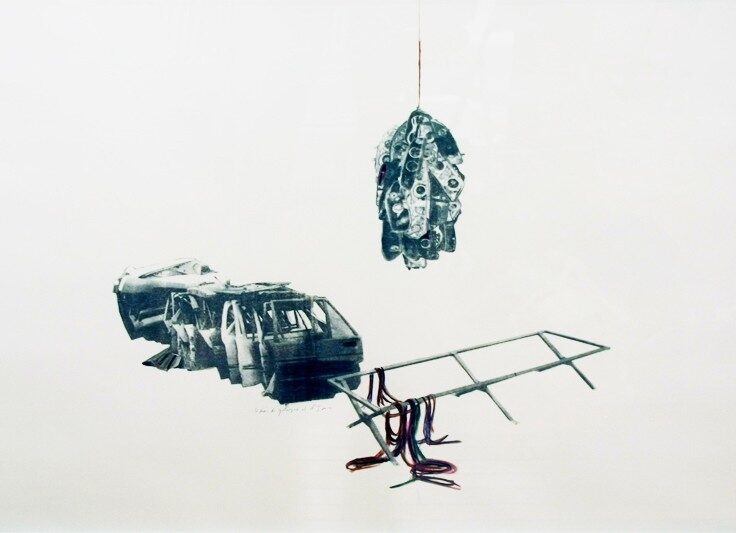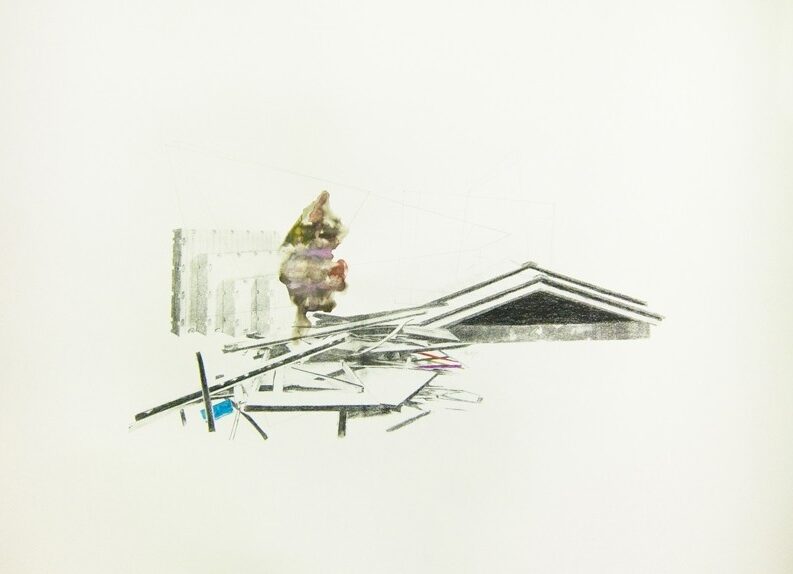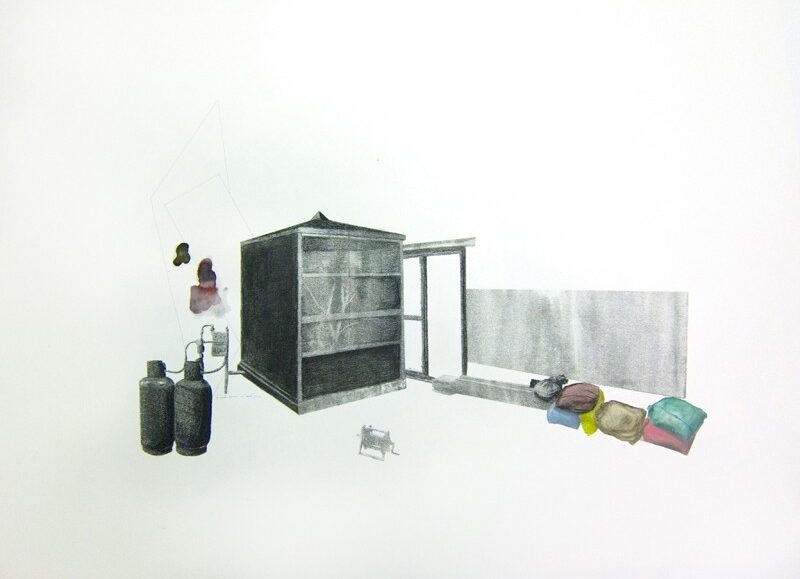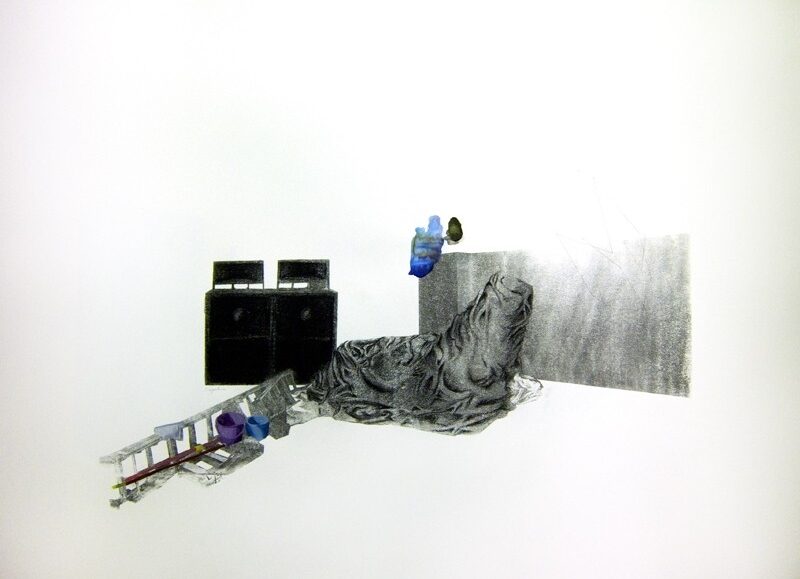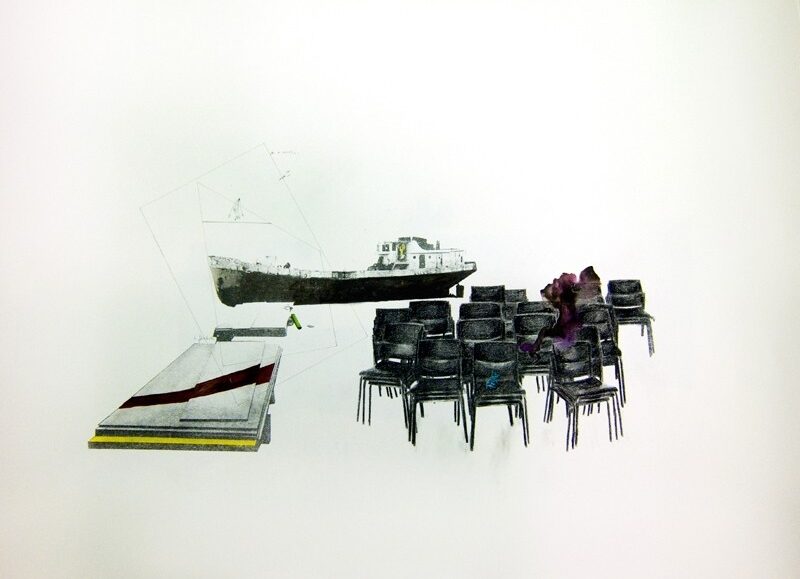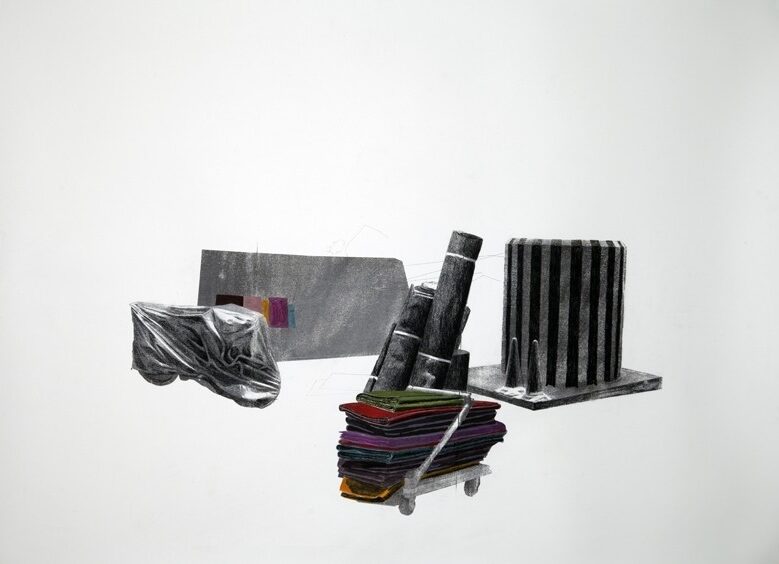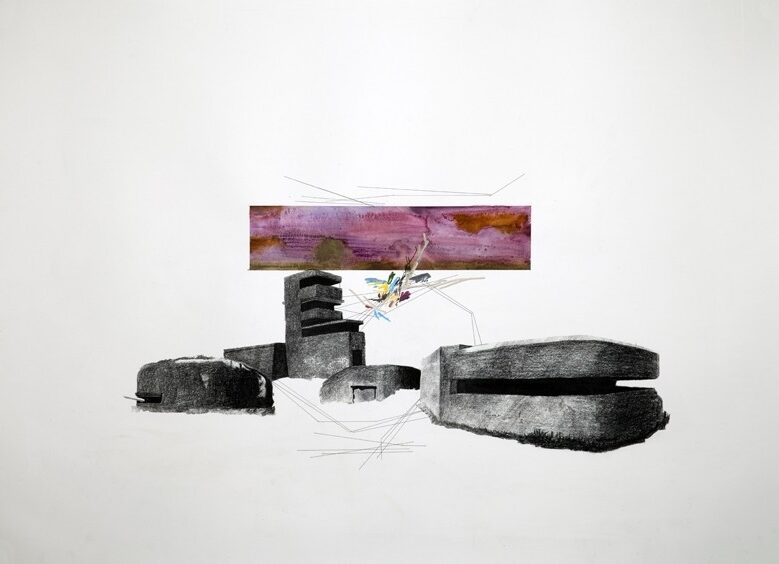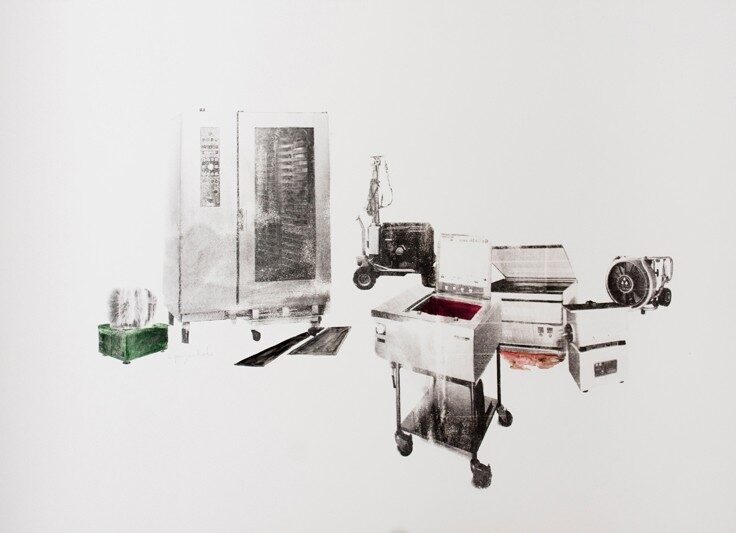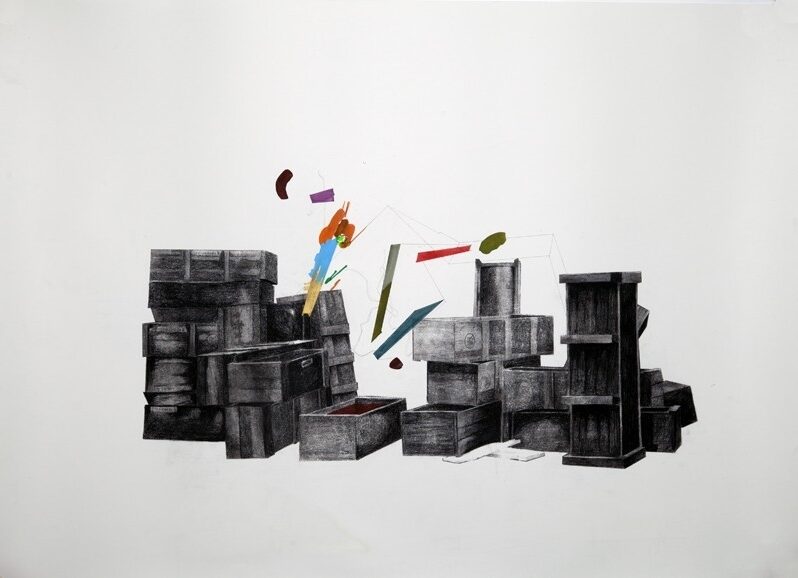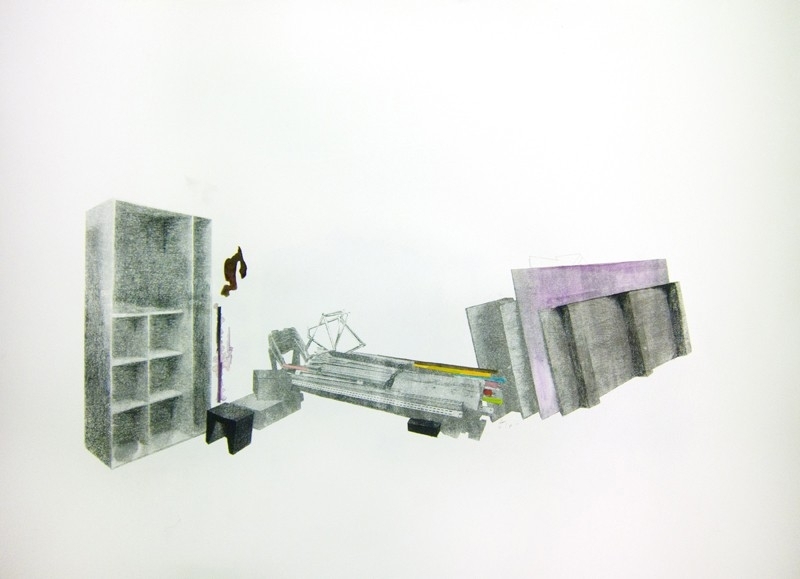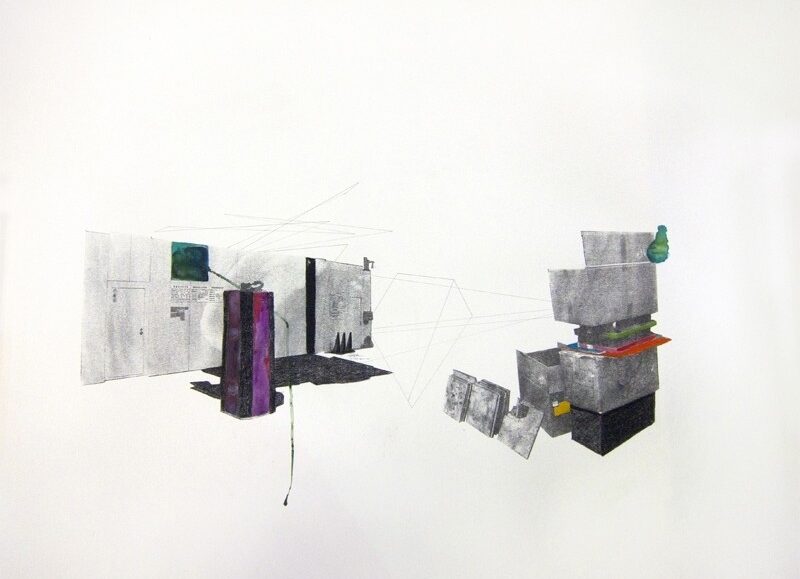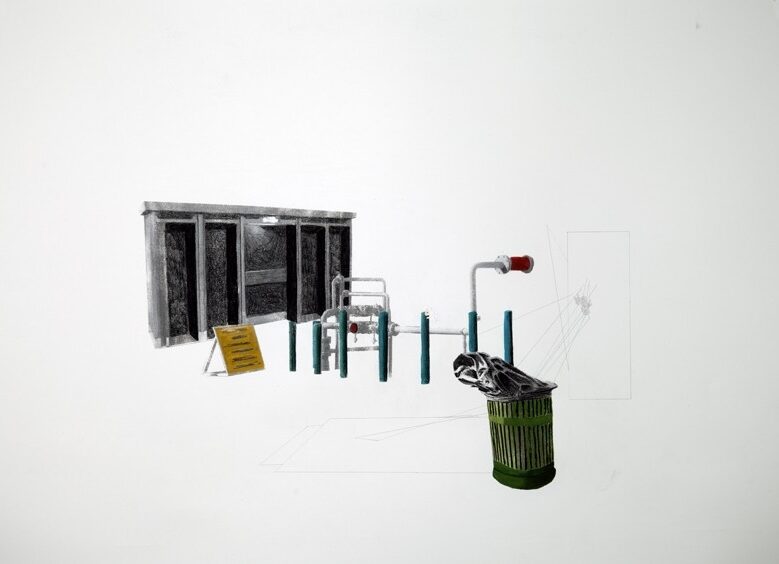Drawing, in this body of work, is not a tool for depiction but a terrain for projection — a site where fragments of memory, architecture, and speculative geographies coalesce. Each line drawn is a line of inquiry, a silent negotiation between the visible and the vanished.
In Researching Possible Panoramas, the image emerges not as a finished picture, but as a sediment of thought. Layers accumulate like ruins or echoes: graphite, ink, erasure, repetition — each mark is both a trace and a refusal, a suggestion of place that cannot fully settle into being. The drawings do not describe; they search. They are maps without destinations, blueprints for landscapes that may never exist.
There are architectures here, but they are partial, suspended, interrupted. Windows that open onto nowhere. Pathways that fold back on themselves. Grids overgrown with doubt. The horizon — when it appears — is never fixed; it is a shifting boundary, a suggestion of distance, of something just beyond grasp.
These works inhabit a threshold: between the built and the remembered, the imagined and the erased. They attempt to visualize the act of searching itself — for form, for meaning, for another way to inhabit space and time. Drawing becomes a form of excavation, of constructing while simultaneously letting go.
Researching Possible Panoramas is thus an ongoing process, a meditative cartography. Each drawing is a proposal for a possible elsewhere — a mental architecture suspended between past and future, presence and absence.
